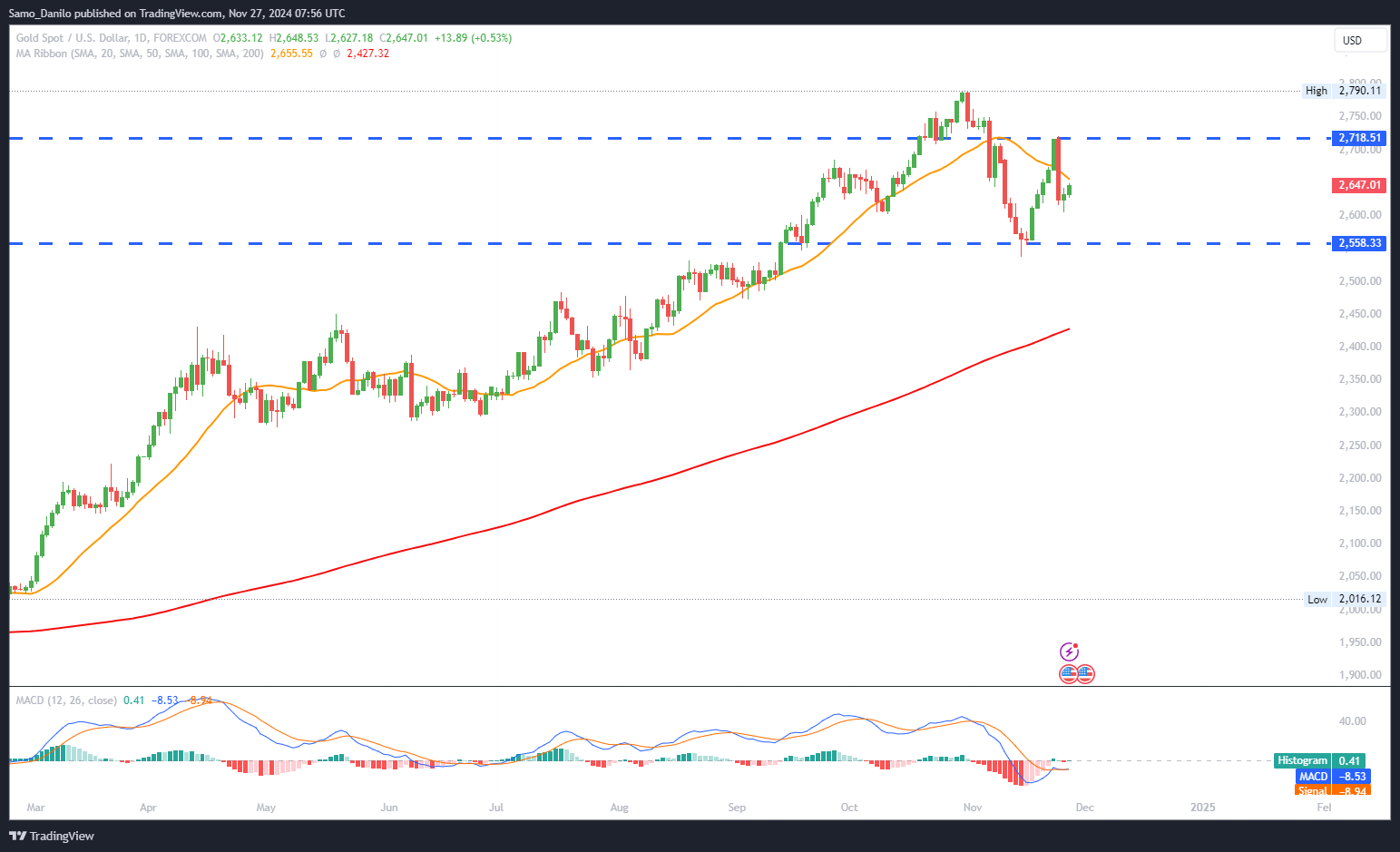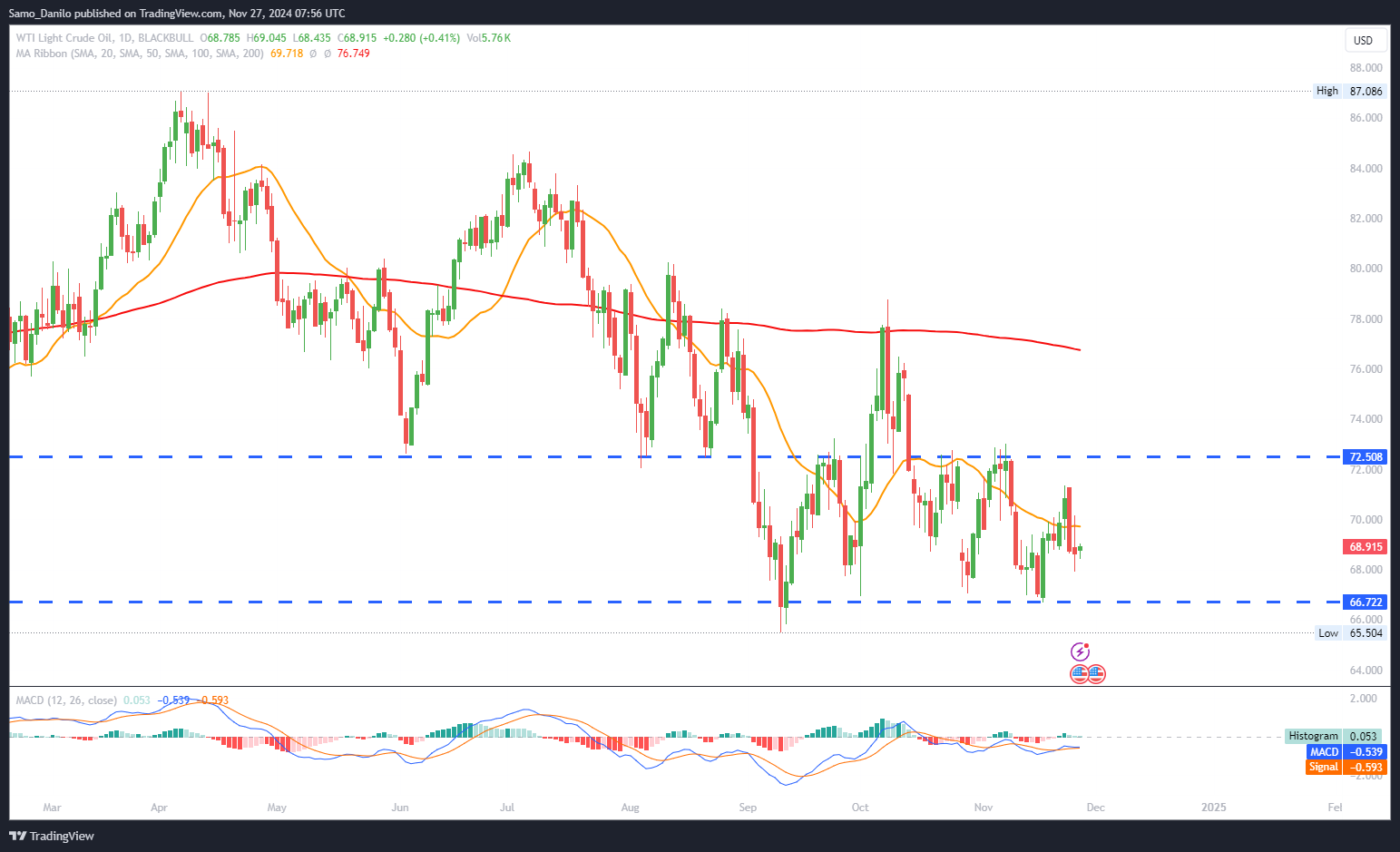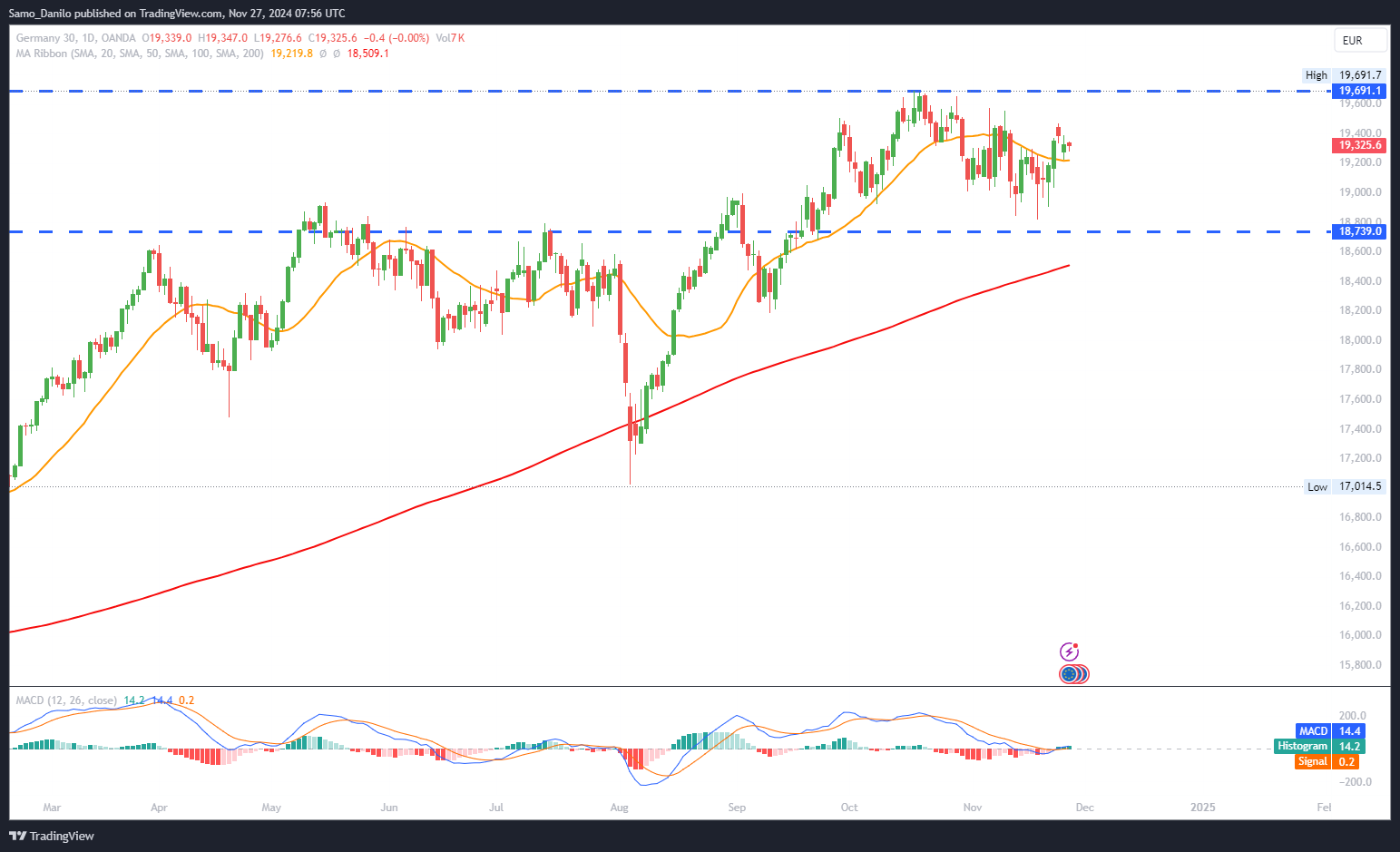EURUSD
- Current Price: EUR/USD continues to trade in a tight range below 1.0500 in Wednesday’s European session. Market participants remain cautious ahead of high- impact US economic data releases, which could provide fresh directional cues.
- Trump’s Tariffs: Reports indicate that President-elect Donald Trump will appoint Jamieson Greer as the US Trade Representative, emphasizing the central role of tariffs in his economic strategy. This development strengthens the US Dollar as markets anticipate increased protectionism under the incoming administration.
- FOMC Minutes: The latest FOMC Meeting Minutes from November reveal that US policymakers are wary of cutting rates too aggressively, citing inflation and labour market uncertainties. This stance supports the USD, limiting upside potential for the EUR/USD pair.
- Dovish ECB Expectations: In the Eurozone, markets have fully priced in a 25-basis- point ECB rate cut in December. The probability of a larger 50 bps cut has risen to 58%, reflecting growing concerns over the region’s economic outlook. This dovish sentiment keeps the Euro under pressure against the USD.
- US Economic Data: Traders remain cautious, awaiting key US economic indicators such as PCE inflation data, which could significantly influence Federal Reserve rate expectations. These data releases will likely be pivotal for the EUR/USD’s next move.
Closing statement: EUR/USD remains under pressure due to dovish ECB expectations and the USD’s strength, driven by cautious FOMC policies and Trump’s tariff-focused agenda. Upcoming US economic data, particularly PCE inflation, will likely shape short-term direction for the pair.
GBPUSD
- Current Price: GBP/USD is trading on a positive note, holding above 1.2550 in Wednesday's early European session. However, the pair remains sensitive to broader USD strength and geopolitical developments.
- Trump's Tariffs: US President-elect Donald Trump’s vow to impose tariffs on imports from Canada, Mexico, and China strengthened the Greenback on Tuesday. This announcement added pressure on the British Pound despite its current recovery.
- Fed Rate-Cut Path: The FOMC minutes from November highlight confidence in easing inflation and a robust labour market. Fed officials signalled readiness for further rate cuts but emphasized a gradual approach, supporting USD demand and limiting GBP/USD upside.
- BoE's Cautious Stance: Bank of England Deputy Governor Clare Lombardelli reiterated the need for more evidence of cooling inflation before endorsing further rate cuts. This aligns with the majority of BoE policymakers who favour a measured approach to monetary easing, maintaining some support for the GBP.
- US Core PCE Data: Traders are closely watching the upcoming US October Core PCE Price Index release for additional directional cues. This high-impact data will likely influence Federal Reserve policy expectations and GBP/USD sentiment.
| SMA (20) | Falling |
|
|
| RSI (14) | Falling |
|
|
| MACD (12, 26, 9) | Falling |
|
|
Closing statement: GBP/USD is recovering from recent lows but remains capped by USD strength driven by Trump's tariff plans and the Fed's cautious policy stance. The pair's next move hinges on US Core PCE data, which could reshape expectations for Fed rate cuts and broader market sentiment.
GOLD
- Gold Recovers: XAU/USD extends its recovery for the second consecutive day, building on Tuesday’s bounce from $2,600. Improved market sentiment supports the precious metal’s upside amid cautious USD performance.
- Geopolitical Tensions: A ceasefire between Israel and Lebanon has reduced safe- haven demand for the US Dollar. Despite this, Gold has gained traction as investors seek alternatives amid ongoing global uncertainties.
- Fed Minutes: The November FOMC minutes revealed a divided stance on future rate cuts. Nonetheless, markets are pricing in over a 60% likelihood of a 25-basis-point rate cut by the Fed next month, which supports Gold’s appeal as a hedge against a softer USD.
- China’s Gold Imports Data: China’s net gold imports via Hong Kong declined significantly in October, falling 43% year-over-year, reflecting softer demand. This dampens optimism for robust physical demand from one of the world’s largest gold consumers.
- US Core PCE Data: Traders await the release of the US Core Personal Consumption Expenditure (PCE) Price Index for fresh insights into inflation trends. The outcome could shape expectations for Fed monetary policy and influence XAU/USD direction.
| SMA (20) | Rising |
|
|
| RSI (14) | Slightly Falling |
| |
| MACD (12, 26, 9) | Slightly Falling |
|
Closing statement: XAU/USD maintains a recovery bias as easing geopolitical tensions weigh on the USD, offsetting weaker physical gold demand data. Upcoming US inflation data will be pivotal in determining Gold's near-term trajectory, with a dovish Fed potentially providing further support.
CRUDE OIL
- WTI Price: West Texas Intermediate (WTI) trades near $69.10 on Wednesday. Uncertainty looms as US President-elect Donald Trump’s proposed blanket tariffs on imports from Mexico and Canada could disrupt the US oil industry, adding volatility to crude prices.
- US Crude Inventory: The American Petroleum Institute (API) reported a significant drop in US crude oil stockpiles by 5.935 million barrels for the week ending November 22. This unexpected drawdown boosts near-term optimism for crude demand.
- Middle East Ceasefire: Israel’s approval of a ceasefire deal with Hezbollah has reduced geopolitical risks linked to Middle Eastern oil supply disruptions. This development may temper upward pressure on prices stemming from other conflicts, such as Russia-Ukraine tensions.
- OPEC+ Production: OPEC+ is reportedly deliberating another delay to planned oil production increases initially scheduled for January 2025. The group’s decision at the upcoming December 1 meeting could influence oil’s medium-term outlook, with a delay likely supporting prices.
- Key Data and Policy Developments: Traders are closely watching further inventory reports and OPEC+ deliberations. With global demand steadying, market participants are also assessing the implications of US economic policies and geopolitical developments.
| SMA (20) | Slightly Falling |
| |
| RSI (14) | Slightly Rising |
| |
| MACD (12, 26, 9) | Falling |
|
|
Closing statement: WTI crude faces a mixed outlook, supported by falling US inventories and potential OPEC+ production adjustments, while geopolitical de-escalations and tariff uncertainties pose risks. From a technical point of view, crude is coming up on key support levels today again, like it did yesterday.
DAX
- DAX Declines: The DAX fell by 0.56% on Tuesday, reversing Monday’s gains as US President-elect Trump’s tariff threats on Canada, China, and Mexico dampened sentiment. Export-driven economies, such as Germany, face heightened risks, pressuring the index.
- Auto Sector: German auto stocks led the decline, with Daimler Truck Holding dropping 6.01%, and Volkswagen and Porsche losing 2.38% and 2.00%, respectively. Concerns that the EU auto sector could become a key target for Trump’s tariff policies weighed heavily on BMW and Mercedes Benz Group.
- GfK Consumer Sentiment: Investors are eyeing Germany’s GfK Consumer Sentiment Indicator, with expectations of a slight drop from -18.3 to -18.6 for December. Persistent economic uncertainty and weak business sentiment could further erode consumer confidence.
- US Consumer Confidence: The CB Consumer Confidence Index climbed from 109.6 in October to 111.7 in November, suggesting potential resilience in US spending. This data may indirectly influence European markets, given global economic interdependence.
- US Core PCE Data: Attention shifts to the US Personal Income and Outlays Report, with expectations for the Core PCE Price Index to rise by 2.8% YoY in October. A higher-than-expected reading could strengthen the US dollar and weigh on global equities, including the DAX.
| SMA (20) | Rising |
|
|
| RSI (14) | Slightly Rising |
| |
| MACD (12, 26, 9) | Slightly Rising |
|
Closing statement: The DAX faces headwinds from escalating US tariff concerns and auto sector vulnerabilities, with additional pressure from weakening consumer sentiment. Investors will closely monitor US economic data and Germany’s consumer confidence figures for further market direction.




